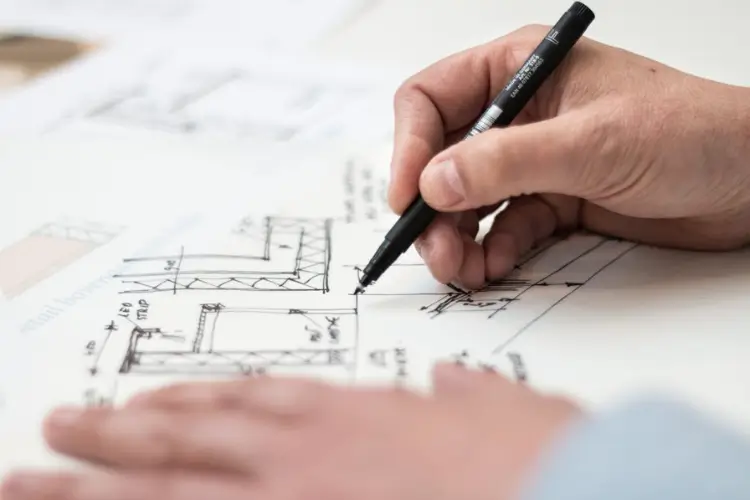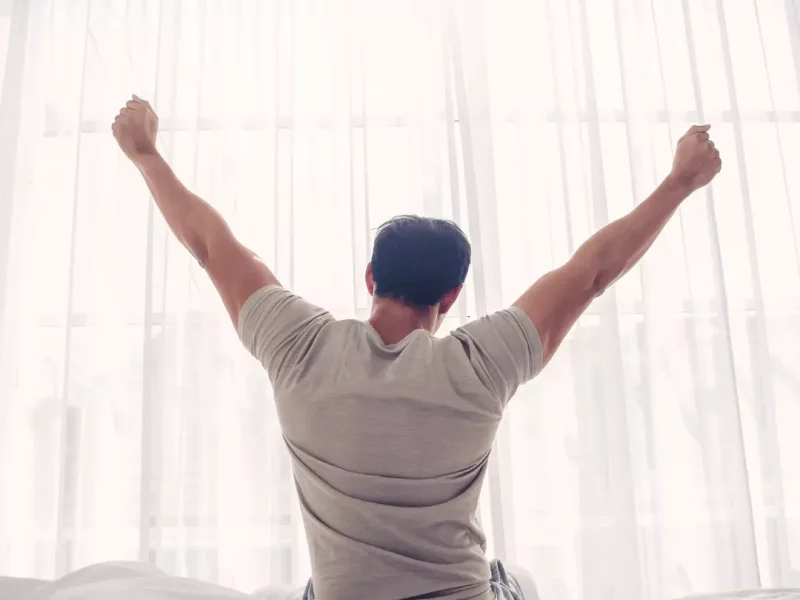We’ve all been there. You open a closet door and have to quickly catch the avalanche of stuff threatening to spill out. You can’t find important documents because they’re buried under piles of papers you’ve been meaning to sort through “someday.” Your garage has become a storage unit for things you don’t use, don’t need, and honestly can’t remember acquiring in the first place.
But here’s what most people don’t realize: all that clutter isn’t just taking up physical space. It’s occupying mental real estate, draining your energy, and quite literally costing you money, time, and peace of mind.
The movement toward minimalism and intentional living has gained massive momentum in recent years, and it’s not just another passing trend. People are discovering that letting go of excess possessions creates space for what truly matters—experiences, relationships, personal growth, and genuine happiness. If you’ve been feeling overwhelmed by the stuff in your life, this comprehensive guide will show you how to transform your living space and, in the process, transform your entire lifestyle.
Why Clutter Is More Than Just a Messy House
Before we dive into the how, let’s talk about the why. Understanding the true cost of clutter makes it much easier to commit to the decluttering process.
The average American home contains over 300,000 items. Let that sink in for a moment. Three hundred thousand things. Most of which we rarely or never use. Research shows that we typically only use about 20% of what we own, meaning 80% of our possessions are just sitting there, collecting dust and taking up space.
But the impact goes far deeper than simple statistics. Clutter creates what psychologists call “cognitive overload.” Every item in your visual field requires some amount of mental processing power, even if you’re not consciously aware of it. When you’re surrounded by clutter, your brain is constantly working to process all of this visual noise, leaving you feeling tired, stressed, and unable to focus.
Studies have consistently shown that people with cluttered homes have higher levels of cortisol, the stress hormone. They report feeling more anxious, more overwhelmed, and less in control of their lives. Clutter affects sleep quality, decision-making ability, and even relationship satisfaction. Couples argue more frequently in cluttered environments, and children struggle to focus on homework when surrounded by visual chaos.
Then there’s the financial cost. We waste money buying duplicates of things we already own but can’t find. We pay for storage units to house possessions we don’t use. We lose valuable items in the clutter and have to replace them. And perhaps most significantly, clutter keeps us stuck in consumption patterns, always believing we need to buy more to organize what we already have.
The Psychology Behind Why We Keep Things We Don’t Need
If clutter is so problematic, why do we keep accumulating and holding onto things? Understanding the psychology helps us address the root causes rather than just treating symptoms.
Sentimental attachment is probably the biggest culprit. We keep items because they remind us of people, places, or times in our lives. That box of high school yearbooks, your grandmother’s china you never use, souvenirs from trips that live in storage bins. These items carry emotional weight that makes them difficult to release, even when they’re not adding value to our current lives.
Fear of waste stops many people from letting go. We think, “But it’s still good! Someone could use this!” So we hold onto things indefinitely rather than finding them a new home where they’d actually be used. The irony is that by keeping these items unused in our spaces, we’re wasting them anyway.
The “just in case” mentality convinces us we might need something someday. Craft supplies for projects we’ll probably never start. Clothes from when we were a different size. Old electronics that still technically work but that we’ve replaced with newer versions. Just in case becomes a justification for keeping everything.
Identity attachment makes us believe our possessions define who we are or who we want to be. We keep books we haven’t read to seem intellectual. We hold onto sports equipment from hobbies we no longer pursue. These items represent aspirational versions of ourselves rather than our actual, current reality.
Decision fatigue plays a role too. Deciding what to keep and what to release requires mental energy. When we’re already overwhelmed, making hundreds of these micro-decisions feels impossible, so we avoid the decluttering process altogether.
Understanding these psychological barriers doesn’t make them disappear, but it does help you recognize when they’re influencing your decisions. Awareness is the first step toward change.
The Life-Changing Benefits You’ll Experience
Now for the good news. When you commit to decluttering and embrace a more minimalist approach to possessions, the benefits extend far beyond having more closet space.
Mental clarity improves dramatically. Without the constant visual noise of clutter, your mind can finally relax. You’ll notice improved focus, better decision-making, and reduced anxiety. Many people report feeling like a mental fog has lifted after decluttering their primary living spaces.
Time becomes available. The average person spends one year of their life looking for lost items. One full year. When everything has a designated place and you own less overall, you’ll find things instantly. You’ll spend less time cleaning, organizing, and maintaining your possessions, freeing up hours each week for activities you actually enjoy.
Financial freedom follows naturally. Once you experience the peace of living with less, you’ll find yourself much less tempted by consumer culture. You’ll buy more intentionally, focusing on quality over quantity. The money you used to spend on accumulating and storing stuff becomes available for experiences, savings, or things that genuinely add value to your life.
Relationships often strengthen. Shared spaces become more pleasant, reducing friction between family members or roommates. You’ll have time and energy for the people who matter rather than constantly managing your stuff. And you might find that experiences together become more valuable than material gifts.
Personal growth accelerates. When you’re not spending time and energy managing possessions, you have bandwidth for pursuing goals, learning new skills, and exploring interests. Many people report that decluttering becomes a catalyst for broader life changes—career shifts, relationship improvements, health transformations.
Environmental impact decreases. By consuming less and being more intentional about what you bring into your home, you’re reducing your environmental footprint. Choosing quality items that last over cheap things that need frequent replacement, buying secondhand when possible, and ensuring your castoffs are properly donated or recycled all contribute to a more sustainable lifestyle.
Starting Your Decluttering Journey: The First Steps
The prospect of decluttering an entire home can feel overwhelming, especially if clutter has been accumulating for years. The key is starting small and building momentum.
Begin with the easiest category, not the hardest. Don’t start with sentimental items or important paperwork. Begin with something simple like expired medications, old magazines, or broken items. These quick wins build confidence and create visible progress that motivates you to continue.
Set a timer for focused sessions. Commit to just 15-20 minutes of decluttering at a time. This makes the task feel manageable and prevents decision fatigue. You can always continue if you’re feeling motivated, but knowing you only need to work for a short burst makes it easier to start.
Use the box method for efficiency. Get four boxes or bags labeled: Keep, Donate, Trash, and Relocate (for items that belong in another room). As you work through a space, every item goes into one of these boxes. This speeds up the process because you’re making clear decisions rather than shuffling things around aimlessly.
Ask the right questions about each item. Instead of “Do I want to keep this?” ask: “Does this add value to my life right now?” “Have I used this in the past year?” “If I didn’t own this already, would I buy it today?” These questions cut through emotional attachment and get to practical reality.
Take before and after photos. Visual evidence of your progress is incredibly motivating. When you’re in the middle of decluttering and things look messier before they look better, photos remind you of how far you’ve come.
Room-by-Room Strategies for Maximum Impact
Different spaces require different approaches. Here’s how to tackle the main areas of your home effectively.
Kitchen and Pantry: Start with food. Check expiration dates and be honest about ingredients you’ll realistically use. Donate unexpired food you won’t eat to local food banks. For cookware and gadgets, keep only what you actually use regularly. That pasta maker collecting dust? If you haven’t used it in a year, someone else could be enjoying it.
Bedroom and Closet: The clothing purge is often both the most difficult and most rewarding. Try the “reverse hanger” method: turn all hangers backward, then after wearing an item, return it with the hanger facing the normal direction. After six months, anything still backward probably doesn’t deserve closet space. For clothes you’re unsure about, pack them in a box. If you don’t retrieve anything from that box in three months, donate the entire box without opening it.
Bathroom: Expired cosmetics, samples you’ll never use, duplicate products, medications past their date—bathrooms accumulate so much hidden clutter. Keep one backup of essentials but resist the urge to stockpile. Simplifying your beauty routine is liberating and often better for your skin anyway.
Home Office and Paperwork: Go digital wherever possible. Scan important documents and shred papers you no longer need. Create a simple filing system for what must be kept in physical form. Be ruthless with old electronics—if it doesn’t work or you’ve upgraded, properly recycle it rather than letting it take up drawer space.
Living Areas: Books you’ll never read again, DVDs you haven’t watched in years, decorative items that don’t bring you joy—living spaces often become display areas for things we feel we should keep rather than things we actually love. Remember that empty space is its own form of decor. A minimalist room feels peaceful and intentional.
Garage and Storage Areas: These spaces often become the dumping ground for everything that doesn’t have a designated home elsewhere. Be particularly honest here about items you’re keeping “just in case.” If you have equipment for hobbies you no longer pursue, sporting goods from activities you’ve moved on from, or tools you never use, it’s okay to let them go to someone who will actually use them.
When Decluttering Becomes a Bigger Project
Sometimes the decluttering process reveals that you have more to deal with than you initially thought. Maybe you’re downsizing from a large home to a smaller space. Perhaps you’re helping elderly parents transition. Or you might be tackling years of accumulated belongings after avoiding the problem for too long.
In these situations, it’s worth considering professional help. Trying to handle large-scale decluttering entirely on your own can be physically exhausting and emotionally draining. Professional junk removal services exist specifically to help people through these bigger transitions.
For instance, if you’re in the Bay Area dealing with a major home cleanout, estate clearing, or significant downsizing project, services like professional junk removal in Redwood City can handle the heavy lifting—literally. They’ll efficiently remove large furniture, appliances, and bulk items that would be difficult or impossible to manage on your own. This is especially valuable when you’re clearing out a garage, basement, or storage space that’s accumulated years of belongings.
Similarly, those managing properties or dealing with move-outs in other areas might find that junk removal services in San Ramon provide the support needed to transform an overwhelming project into a manageable one. Rather than making dozens of trips to donation centers and dump facilities, professional services can complete the entire removal in a fraction of the time.
The key is knowing when DIY decluttering makes sense and when bringing in professional help will actually save you time, money, and stress in the long run. For everyday decluttering, you can absolutely handle it yourself. But for major projects—especially those involving large items, time constraints, or emotional difficulty—getting help isn’t admitting defeat. It’s being strategic about your resources.
Maintaining Your Decluttered Space: Systems That Actually Work
Decluttering is only half the battle. Without systems to prevent clutter from returning, you’ll find yourself back where you started within months.
The One In, One Out Rule: When you acquire something new, something old must go. New shirt? Donate an old one. New book? Pass along one you’ve already read. This keeps your possessions at a manageable level indefinitely.
The “Maybe” Box System: When you’re unsure about releasing something, don’t force the decision. Put it in a “maybe” box with a date three months from now. If you haven’t needed it or thought about it in that time, donate the entire box without opening it again.
Regular Decluttering Sessions: Schedule quarterly 15-minute sessions in each room. This prevents small amounts of clutter from accumulating into overwhelming messes. Make it a routine, like changing the smoke detector batteries or deep cleaning the refrigerator.
Thoughtful Acquisition: Before buying anything, ask: Where will this live? Do I have space for it? Do I already own something that serves this purpose? Will this add genuine value or am I just filling an emotional need with purchasing? Most impulse buys can be avoided with this simple pause.
Digital Decluttering Counts Too: Your devices accumulate digital clutter—old files, duplicate photos, unused apps, overflowing email inboxes. Apply the same minimalist principles to your digital life. Unsubscribe from emails you don’t read, delete apps you don’t use, and organize digital photos regularly.
The Minimalist Mindset: Beyond Just Stuff
True minimalism isn’t about having the fewest possessions or living in an empty white cube. It’s about being intentional with what you choose to keep and bring into your life, focusing on what adds genuine value and releasing the rest.
This mindset extends beyond physical possessions to commitments, relationships, and how you spend your time. Once you experience the freedom of a decluttered home, you’ll often find yourself applying the same principles elsewhere.
Are you overcommitted to activities that don’t truly align with your values? Are there relationships that drain your energy without reciprocation? Are you spending time on things that don’t matter while neglecting what does? The decluttering process often sparks these larger questions about life design.
Living with less isn’t about deprivation. It’s about abundance—abundance of space, time, freedom, and focus for what truly matters. Your possessions should support your life, not define it or control it.
Common Mistakes to Avoid
As you embark on your decluttering journey, watch out for these common pitfalls that can derail your progress.
Mistake 1: Trying to Declutter Everything at Once. This leads to burnout and abandoned projects. Start small, build momentum, and trust the process.
Mistake 2: Just Reorganizing Rather Than Decluttering. Buying storage solutions for clutter doesn’t solve the problem; it just hides it. Reduce what you own first, then organize what remains.
Mistake 3: Making Decisions Based on Cost. “But this was expensive!” isn’t a good reason to keep something you don’t use. The money is already spent. Keeping unused items doesn’t recover that investment.
Mistake 4: Keeping Things Out of Guilt. Gifts you don’t like, inherited items you don’t want, things people gave you—you’re not obligated to keep them forever. Honor the gesture, then release the item to someone who will appreciate it.
Mistake 5: Waiting for Perfect Conditions. You’ll never have unlimited time or energy for a massive decluttering project. Start where you are with what you have.
Your Next Steps Start Today
The beautiful thing about decluttering is that you can start right now, this minute, with minimal planning or preparation. You don’t need to wait for the perfect organizing system or a free weekend.
Look around the room you’re in right now. What’s one thing you can release? A piece of junk mail to recycle? A pen that doesn’t work? A magazine you’ve already read? Start there. Take that single item and properly dispose of it. Congratulations—you’ve begun.
Then tomorrow, find two items. The day after, three. Build the habit gradually. Or if you’re feeling motivated, set a timer for 15 minutes and see how much you can declutter in that time.
The transformation won’t happen overnight, but with consistent small steps, you’ll be amazed at how different your space—and your life—can feel. The peace, clarity, and freedom that come with living intentionally, surrounded only by things you use and love, are absolutely worth the effort.
Your future, less cluttered self is waiting. What are you keeping it from?
Remember, this journey isn’t about perfection or achieving some minimalist ideal you see on social media. It’s about creating a home and life that work for you, that support your goals and values, and that bring you genuine peace and happiness. The stuff is just stuff. The life you create once it’s gone? That’s what matters.
Start small, be patient with yourself, and enjoy the process of creating space for what truly matters in your life.




